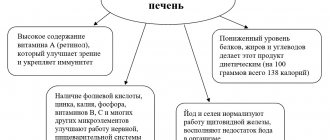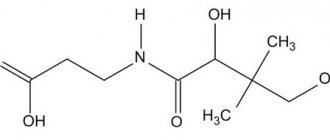Microelements are vital substances
Microelements are vital substances. All of them come from the outside, since the body is unusual in synthesizing them on its own. A person is only capable of accumulating and distributing microparticles. That is why an excess or deficiency of micronutrients has a negative impact on living beings, disrupts the full functioning of organisms and can cause irreversible processes leading to death.
Microelements in the international classification are designated by English letters (Latin). Their names are completely identical to the names of substances in the periodic table.
In different sources you can find different numbers of “main” micronutrients, but most often they talk about 23, 33 and 40 different minerals and complex compounds. According to research by the World Health Organization, there are about seventy microelements in total, which for convenience are divided into groups. Many of the substances have not yet been fully studied, so there is little information about them.
Microelements do not include all elements, but only those particles that are found in the body in minimal quantities. While some macronutrients are found in the body in grams, micronutrients are found in tissues and fluids in micrograms (mcg) and milligrams (mg).
Until recently, very little was known about micronutrients, but science does not stand still. Research institutes conduct experiments that are closely related to biological developments in relation to studying the functioning of the human and any other living organism.
But not all of them are well studied
Therefore, all microelements were divided into 3 groups, depending on how well the concentration of microelements in the human body and their importance for health have been studied.
- Group 1: the largest and most studied. This includes minerals that are constantly in our body, and it is found out how they work, what compounds they contain, why their concentration should be exactly the same, and how excess or deficiency manifests itself. Everything is known, in short.
- Group 2: these elements are also present in humans all the time, but their role has been little studied.
- Group 3: these trace elements are periodically discovered, but it is not clear how many there are, what the significance of these minerals is, where they come from.
There are microelements that are urgently needed for life (essential). These are iron, copper, iodine, zinc, cobalt, chromium, selenium, manganese. And there are microelements that are practically never deficient. That’s why today I’m talking about the first category.
List of essential microelements
The list of essential microelements consists of a large number of chemicals. They all belong to different groups and are found in nature in various forms and states. A small part of the list of microelements is solid substances and enters the body in its pure form. © https://ydoo.info/mikroelementy.htmlMost of the microparticles enter cells in a complex way during the decomposition of multicomponent salts.
The most studied substances, as well as a brief description of their main properties, are presented in the list below.
- Bromine. Liquid with a pungent odor. It dissolves well in water. It is practically never found in its pure form, as it easily enters into chemical reactions and becomes a component of salts. The presence of bromine in the diet improves appetite.
- Zinc. A crystalline mineral that occurs in nature in many combinations. It easily enters into an oxidation reaction, as a result of which zinc oxide appears - a white powdery substance that easily dissolves in water and penetrates the cell membranes of plants and living organisms.
- Chromium. In its natural form it is a metal with a silvery tint. In nature, it exists in the form of ore, which easily crumbles and combines with liquids, and thanks to this it easily seeps into cells.
- Fluorine. It is a halogen gas. Reacts easily with oxygen and is found in water and air. Due to the fact that the substance is lighter than air and other gases, it easily penetrates into the alveoli of the lungs.
- Selenium. Sometimes called the beauty mineral. The substance rarely enters the body in its pure form, so it can be toxic. It is a conductor and companion of iodine and helps the latter to be absorbed by cells as completely as possible.
- Molybdenum. It is not found in free form, but is found in large quantities in ash, coal and oil deposits. It enters the body of living beings with salts and water.
- Copper. In the natural environment it is found in pure form and is present in compounds that form sedimentary rocks. It looks like metal with a characteristic reddish shine. It penetrates into cells in water and participates in oxidative processes in the liver. Absorbed in the digestive tract and does not accumulate in cells. That is why this substance must be supplied daily and in the required quantity.
- Manganese. In nature, it is most often found in the form of compounds. It is easily consumed by plants from the soil and accumulates in their cells. Plant fruits are able to retain the maximum amount of nutrients and then saturate animal cells with them.
- Silicon. It occurs in nature in the form of compounds that are quite easily soluble in water. Considered a biogenic substance.
- Cobalt. It is rarely found in its pure form, as it is an active substance that easily combines with other chemical elements.
- Iodine. It is in crystalline form and easily dissolves in water and other liquids. It is with water molecules that it penetrates into cells, where it neutralizes pathogenic organisms.
- Iron. One of the most common microelements. Enters into chemical reactions with oxygen. Participates in the formation of red blood cells and promotes their active work to saturate cells with oxygen. Incompatible with calcium, since both substances block the absorption of each other.
- Bor. Found in nature only in the form of salts. In the body it plays an important role in regulating the interaction of calcium, potassium, phosphorus and magnesium.
- Lithium. In the natural environment, the substance is almost never detected in its pure form. The most common source of micronutrients is drinking water. That is why, compared to all other microelements, lithium penetrates cells most easily.
- Nickel. For a long time, the substance was considered harmful, because arsenic became a side effect. Today, scientists know that the substance is extremely important for the proper functioning of the body, although the need for it is small.
Precious metals such as gold, platinum and silver are present in limited quantities in the bodies of living beings. Microdoses, in which such nutrients are found in food, have a gentle effect on the body.
In small volumes in the bodies of people, animals and plant tissues there are elements such as germanium, vanadium, bismuth, titanium and others, which can be called relatively new and poorly studied.
It should be noted that all of the above microelements are used in agriculture, animal husbandry and veterinary medicine. Substances are introduced into animal feed in the form of glycinates and other active and easily digestible compounds for the purpose of proper development and prevention of diseases and the appearance of pathogenic microorganisms. According to GOST, microelements are also added to nutrient mixtures for feeding vegetable plants and trees in the garden.
Classification of trace elements
Microelements can be classified according to several criteria, including:
- vital substances;
- toxic;
- irreplaceable;
- partially replenished.
Scientists also classify into separate groups little-studied microelements and substances that do not take part in life support processes.
Vital substances include micronutrients, the specific gravity of which in cells is maximum. The weight of such substances is calculated in micrograms. This group includes:
- fluorine (F);
- copper (Cu);
- selenium(Se);
- bromine (Br);
- molybdenum (Mo).
Partially replenishable substances are usually called substances whose action is replaced by combinations of other macro- and microelements.
The essential substances in the cells of people and all other living organisms include:
- zinc (Zn);
- manganese (Mn);
- iron (Fe);
- iodine (I).
Relatively recently, a group of scientists made adjustments to the classification of micronutrients. Scientific research has shown that it is often the essential substances that quickly turn into toxic ones. This is primarily due to the large amount of these minerals in cells and the influence of the external environment. Toxic micronutrients also include cadmium, lead, tin, strontium and other substances contained in the periodic table. All such substances occur in nature and in the human body in microdoses. Toxic micronutrients can enter the blood and cells from medications and vaccines, as well as when production technology is violated at ferrous metallurgy factories.
Another way to classify and organize microelements necessary for humans and living beings is to divide them according to the criterion of possible deficiency. Thus to:
- essential (deficiency of which can occur without sufficient replenishment of needs) include iron, copper, manganese, zinc, cobalt, chromium, molybdenum, iodine and selenium;
- All other micronutrients are conventionally considered essential.
Also, in light of recent discoveries in bioengineering, scientists have discovered that none of the known microelements accumulate in the body, as nutrients (oxygen, hydrogen and all macronutrients without exception) do, provided that waste removal systems from the body function correctly.
Daily norms
Daily norms (needs) for micronutrients depend on a large list of factors, among which are not only:
- age,
- weight,
- human lifestyle,
but also indicators of general physical health.
Modern biomedicine has several hundred methods for calculating the daily norm of macro-, microelements and ultramicroelements in the bodies of people, domestic animals and plants. Indicators of substances vary in most countries, which is associated not only with the territorial and climatic characteristics of the regions, but also with the usual way of eating.
In post-Soviet countries, the following standards for daily consumption of microelements are most often used:
| Name | Children and teenagers | Adults, regardless of gender |
| Zinc | 10 mg | 12 mg |
| Chromium | 15 mcg | 50 mcg |
| Fluorine | 3 mg | 4 mg |
| Selenium | 30 mcg | 50-70 mcg |
| Molybdenum | 50 mcg | 70 mcg |
| Copper | 0.7 mg | 1 mg |
| Manganese | 1.8 mg | 2.0 mg |
| Silicon | 20 mg | 50 mg |
| Cobalt | 1.5 mg | 5 mg |
| Iodine | 120 mcg | 150 mcg |
| Iron | 4-12 mg | 10-20 mg |
| Bromine | 0.5-1.5 mg | 1.5-2.0 mg |
| Bor | 3.0 mg | 3.0 mg |
| Vanadium | 10 mcg | 25 mcg |
| Lithium | 90 mg | 250 mg |
| Nickel | 20 mg | 40 mg |
Doctors place pregnant women in a separate category, because it is expectant mothers who require the most balanced nutrition. In particular, women carrying a baby in the womb or breastfeeding a baby need to reduce the macronutrient sodium and increase iron in their diet. The daily intake of an element such as calcium in young women should be one and a half times higher than the average norm.
In the USA and other countries, standard indicators differ from those adopted as a basis here. The difference in percentage or specific gravity depends entirely on the habitual diet of the people and what foods are available in the region.
Iodine
This trace element takes part in the production of thyroxine, a thyroid hormone. It contains most (about 15 out of 25 mg) of iodine. If there is enough of this element in the body, then the work of the prostate, ovaries, liver, and kidneys will proceed without disruption. Iodine is present in wheat, dairy products, champignons, algae, rye, beans, and spinach. With a deficiency of the element, there is an enlargement of the thyroid gland (goiter), muscle weakness, a slowdown in the development of mental abilities, and dystrophic changes.
Compatibility with minerals and vitamins
The compatibility of microelements with certain vitamins and minerals is important information for every person. Trying to saturate the body with useful substances at all costs, few people think about such features of substances as the presence of synergists and antagonists. In order to have useful information about how they interact with each other, we suggest that you familiarize yourself with the information in the table.
| Mineral (trace element) | Mineral or vitamin | The essence of interaction |
| Iron | Vitamin A | Helps rationally use iron reserves. |
| Zinc | Vitamin B2 | The absorption of zinc improves. |
| Zinc | Vitamin B6 | Promotes the accumulation of zinc in cells. |
| Iron | Ascorbic acid | The distribution of substances is optimized and the harmful accumulation of vitamin C in cells is reduced. Ascorbic acid, in turn, helps iron to be absorbed and increases its activity in blood cells. |
| Copper | Iron | They enhance each other's beneficial effects. In the presence of one microelement, the second is absorbed many times more efficiently. |
| Zinc | Vitamin B9 | Reduces the concentration of vitamin in cells, which can play a negative role in the body of pregnant women. |
| Calcium | Iron | They negatively affect the accumulation and expenditure of each other. Excess calcium can cause anemia, and excess iron can cause bone tissue destruction, causing caries and osteoporosis. |
| Manganese | Calcium or iron | Any of the two substances from the second column neutralize the beneficial properties of manganese. |
As a result of biochemical processes occurring in living organisms, trace elements react with all other substances in cells: proteins, carbohydrates and fats, as well as water- and fat-soluble vitamins.
You need to know and understand that such important micronutrients as zinc, manganese and selenium tend to enter into special types of relationships, which result in complex antioxidant processes and the removal of toxins. That is why it is important to properly plan your diet and saturate it with essential nutrients that can remove excess from the body. Thanks to this, the human body has the opportunity to cleanse itself.
List of products containing
The list of foods that contain microelements is extensive. Micronutrients are found in any animal and plant foods, as well as multivitamin complexes and biologically active food supplements, which can be purchased at pharmacies or in network marketing companies specializing in sports, healthy and dietary nutrition (usually low-calorie and protein-rich).
The most balanced amount of nutrients is found in energy vitamin and mineral cocktails for athletes and men involved in bodybuilding or weightlifting. It is in such complexes that minerals interact with carotenoids and the most complete set of substances necessary to maintain health.
Most microelements are found in plant foods, because plants accumulate minerals most easily and spend the least of them on the needs of their own body. The list of products of plant and animal origin, which may contain certain micronutrients, is presented below in table form.
| Microelement | Plant food | Animal products | Food, flavoring additives, other products, including medicinal ones |
| Bromine | Sprouted wheat, rye, barley and other grains, peas and beans, flour, pasta, peanuts, hazelnuts and walnuts, seaweed. | Cod and its liver, mackerel, capelin, shrimp, cow's milk and dishes made from it, cheese, sour cream, whey, feta cheese and cottage cheese. | Sea water, complex salts. |
| Iron | Cereals (cereals and porridges from them: buckwheat, millet, ornovka, pearl barley, oatmeal), legumes, seaweed, cherries, dogwoods, parsley, dill, persimmons, honeysuckle, spinach, arugula, lettuce, apricots, apples, pears, oatmeal , pomegranates, beets, avocados, carrots, plums and prunes, cherries, horse sorrel, strawberries, lemon. | Livers of animals and birds, quail eggs, in particular egg yolk, beef kidneys, beef, udder, turkey heart, tongue, lamb and wild game meat. | Mineral water, cinnamon, apricot and almond kernels, coffee. |
| Lithium | Peach, nectarine, sauerkraut, radish, horseradish, mustard. | Milk and dairy products | Sea salt, drinking mineral water. |
| Nickel | Black and red currants, wild mushrooms, carrots, onions and green onions. | Sea fish (pollock, hake, notothenia) and delicacies, milk, sour cream, cream, butter, cattle by-products. | Chocolate. |
| Iodine | Kelp, brewer's and baker's yeast, champignons, hops, pickles and other pickles, sauerkraut, pine nuts, onions and garlic. | Fish and seafood (squid, mussels, oysters), black caviar, milk. | Sea salt, mineral water. |
| Cobalt | Vegetables whose fruits are above the ground, fireweed (fireweed) and honey from its pollen, cranberries, black currants, serviceberry, pomegranate, rowan. | Meat of sea animals, river oily fish, milk, kefir, chicken liver, rabbit meat, kidneys and other offal. | Naturally enriched water. |
| Manganese | Blueberries, lingonberries, garlic, wild mushrooms, rose hips, blueberries, grapes and raisins, cabbage, lettuce, wheat sprouts, banana, strawberries, raspberries. | Chicken and beef liver, turkey meat. | Mineral water, turmeric |
| Copper | Eggplants, beets, turnips, radishes, asparagus, carrots, blackberries, peas and legumes, sesame seeds, halva, pumpkin and sunflower seeds, canned corn, cashews, hazelnuts, nettles. | Seafood, wild game meat, pig brains and hearts. | Chocolate, mineral water. |
| Molybdenum | Peas, soybeans, lentils, corn, pasta, mushrooms. | By-products, milk, quail and chicken eggs, sea fish (mackerel, salmon, trout, herring, horse mackerel, tuna), white chicken breast, pork and lard. | Table salt. |
| Selenium | Seaweed, cabbage (white cabbage, broccoli, cauliflower), bell peppers, tomatoes and their juice, cucumbers, wheat bran, mango, aloe, Brazil nuts, sunflower and flax seed oil. | Seafood (squid, octopus), chicken stomachs, liver, kidneys, udder, brains. | |
| Fluorine | Oranges, grapefruits and other citrus fruits, seaweed, cereals and products made from them, potatoes, turnips, loose leaf tea, basil. | Beef and veal, liver, fish and seafood (oysters, lobsters), crayfish. | Water. |
| Chromium | Corn and corn oil, pumpkin, zucchini, watermelon, sea buckthorn, melon, brewer's yeast. | Beef liver, chicken meat. | |
| Vanadium | Wheat, spelt, semolina, apricot, dried apricots, peach, pear, pistachios, olive oil, arugula. | Pork, fatty meat, beef liver. | Mountain wax (white mumiyo, stone oil). |
| Bor | Gooseberries, kiwi, ginger, figs, viburnum, nuts. | Seafood and valuable varieties of fish. | |
| Silicon | Coconut flakes, peas, beans, mushrooms, parsley, celery root, spinach, rhubarb, radish, radish, beets, cabbage, dates. | Seafood and fish. | Eggshells, alkaline mineral waters. |
| Zinc | Brown rice and bulgur, wheat, oats and other grains, bread, raw potatoes, mushrooms, onions, beets, cocoa beans, hemp seeds, quinoa. | Sea fish and delicacies, milk. |
Some of the most versatile food products are honey and bee products: pollen, propolis, beebread and wax. Natural treats produced by bees are not only rich in minerals, but also contain a record amount of substances and enzymes vital for a person of any age. It’s not for nothing that all these healthy products are called a storehouse of health! Products produced by bees are able to replenish reserves and eliminate the shortage of almost all useful substances, subject to daily consumption within the limits established by doctors (endocrinologists, nutritionists and gastroenterologists) doses.
All micronutrients are retained in sources during long-term storage of vegetables, berries and fruits in their pure form, but their concentration decreases along with the evaporation of moisture from the fiber. The same can be said about dried fruits.
When consuming animal products along with micronutrients, the body receives the amino acids necessary in the process of life. From cooked foods, the body usually consumes microelements in a more concentrated form. Due to the fact that intercellular fluid is lost in such raw materials, 100 grams of a raw product and one hundred grams of a finished product have different caloric content and nutrient content. All of the above also applies to products that have undergone pasteurization or short-term cooking.
In addition to those listed above, many cultivated and medicinal herbs, as well as plants related to spices, have a fairly large amount of micronutrients: chicory roots, milk thistle meal, spirulina, horsetail, thyme, mint, clover, black cumin, chaga mushroom. Herbs are used to prepare nutritious or energy-rich drinks to optimize metabolic processes. That is why decoctions and infusions of herbs help in the treatment of many diseases.
Symptoms of deficiency and excess
Symptoms and signs of deficiency and excess of microelements are listed in the table.
| Microelement | Lack (lack, absence) | Excess (hypersaturation, overdose) |
| Bromine | Nervousness and mental disorders, poor appetite, insomnia, anemia, elevated body temperature, increased frequency of seizures due to epilepsy. | Excessive fatigue, lethargy, lack of sexual desire, apathy. The toxic properties of the substance are observed when consuming medications, including cough syrups. |
| Iron | Low hemoglobin level, hematopoiesis problems, gastrointestinal disorders (gastritis, enteritis, cholecystitis). | Acute heart failure, problems with the gallbladder, liver failure and problems with the spleen, cirrhosis of the liver (especially if you have bad habits), heavy menstrual bleeding, hemorrhoids. |
| Lithium | Aggression and mental instability (panic attacks, depression), memory loss. | Loss of coordination of movements, dry mouth, trembling hands. |
| Iodine | Thyroid diseases such as hypothyroidism. It provokes the development of fetal pathologies starting from the first trimester. Manifested by convulsions and metabolic disorders. | Hyperthyroidism, the formation of tumors in the thyroid gland that degenerate into cancer. |
| Cobalt | Affects heart rate and provokes the development of anemia. | Deterioration of hearing, increased blood pressure, skin diseases due to the appearance of microcracks on it and the entry of pathogens, pulmonary failure. |
| Manganese | Reduces cholesterol metabolism, provokes atherosclerosis, and causes dermatitis and skin rashes. | It provokes disruptions in the functioning of the central nervous system, is a common cause of apathy, causes drowsiness and is the main cause of decreased learning ability. The accumulation of 40 mg of this substance per day by cells is considered toxic. |
| Copper | Bone diseases, joint dissection and decreased quality of joint fluid, blood cancer. | Bone growth slows down and metabolism in the body is disrupted, resulting in constipation. |
| Molybdenum | It provokes an increase in meteonine in the blood, which becomes the cause of gout. With a chronic deficiency of the substance, bone tissue becomes excessively strong, there is a decrease in general immunity and the risk of developing cancer (usually breast and blood) increases. | Unreasonable loss of body weight, muscle rigidity, weakness, liver and hematopoietic system diseases, as well as problems with conceiving and bearing a child. |
| Selenium | Atherosclerosis, slowing of protein-lipid metabolism, causeless weight gain due to a proper daily routine and good nutrition, diabetes and pancreatitis, decreased testosterone levels, sweating, impotence, loss of sexual desire, female infertility and low sperm motility. | Mental disorders, depression and frequent mood swings, dry skin and mucous membranes, deterioration of hair condition, decreased range and clarity of vision, hypertension, insomnia. |
| Fluorine | Weakness of tooth enamel, caries and periodontal disease, problems of the musculoskeletal system, pain in bones and joints. | Deposition of stones in the kidneys and urinary tract, blockage of blood vessels in the circulatory system. |
| Bor | Joint and muscle pain when there is no load, problems with the spine, a general decrease in the body's resistance. | Vomiting and dizziness, excessive urine discharge, loose stools due to indigestion. |
| Chromium | Insulin resistance, which leads to the development of diabetes. | Asthmatic attacks, allergies. |
| Vanadium | Falling blood sugar (glucose) levels, cardiovascular pathologies. | The delay is simple in children, thinning of the walls of blood vessels, hemorrhages. |
| Silicon | Cardiovascular pathology, stroke, psoriasis. | Cough and bronchospasms, accumulation of stones and sand in the renal pelvis, mental instability, asthma. |
| Zinc | Dermatitis and other skin problems, weakness, dullness and brittle hair, weakening and loss of hair follicles, leading to focal baldness, intestinal dysfunction, thinning of the retina. With a lack of micronutrients, patients complain that they constantly want sweets. | Toxic damage to organs and tissues, causing headaches, nausea, loss of coordination and loss of orientation in space, loss of vitality and energy. |
Lack or excess of microelements in the human body is the main cause of dysfunction of the endocrine system, which in turn provokes the development of diseases such as diabetes, pancreatitis, and infertility. In especially severe cases, the nervous or cardiovascular system is affected, which in a short time leads to irreversible consequences.
Bor
This microelement is found in almost the entire human body. The highest concentration of boron is observed in the bones of the skeleton, as well as in tooth enamel. The substance promotes good condition of the whole body. The presence of boron in sufficient quantities ensures stable functioning of the endocrine glands. In children without a deficiency of this element, the correct formation of the skeleton is observed. The substance sufficiently increases the concentration of sex hormones, which is especially important for women during menopause.
Boron is found in the following products:
- Corn.
- Buckwheat.
- Beet.
- Various legumes.
The deficiency of the microelement in question manifests itself in hormonal imbalances. Among women, boron deficiency is associated with osteoporosis, erosion, fibroids and other problems. In addition, a small amount of boron increases the risk of joint dysfunction and the development of urolithiasis.
Causes of deficiency and excess
The reasons for the lack or excess of micronutrients in the cells and tissues of living organisms may be problems with digestibility or a small amount of substances coming from outside.
Also, low levels of microelements and other substances in the body can be noted when a person has bad habits: abuses alcohol, smokes tobacco. In addition, a decrease or critical excess can provoke:
- problems in the gastrointestinal tract;
- oncological diseases in the stage of development or remission;
- poisoning by toxic substances from the air;
- non-compliance with the daily routine;
- improper (irregular) nutrition and strict diets.
It is the latter that most often becomes a prerequisite for vitamin deficiency or a surplus of substances that are antagonists of certain minerals, including micronutrients.
Also, often an excess of micronutrients can be associated with:
- liver and kidney diseases;
- poor absorption in the intestines;
- using drugs without a doctor's prescription.
Due to physical activity at work or playing sports, losses of micronutrients are recorded. Most often, beneficial substances are released through sweat and urine. Long-term deficiency of nutrients, in turn, affects physical fitness.
Living in environmentally unfavorable areas, as well as megacities, can provoke an oversaturation of the body with micronutrients (or, on the contrary, an acute shortage of micronutrients). Salts of aluminum, mercury and lead, which are the most common environmental pollutants, displace not only macro- and microelements, but also most vitamins from cells. In women, an imbalance of minerals can be caused by taking oral hormonal contraceptives and pills for “quick” protection from unwanted pregnancy, as well as uncontrolled use of multivitamins “for hair, skin and youth.”
Trace elements and other minerals are part of natural and very expensive cosmetics. But if used incorrectly, you can easily oversaturate the body with active substances contained in:
- creams;
- lipsticks;
- masks;
- blue clay;
- gels;
- shampoos and other products used in the beauty industry.
Proper nutrition, rich in substances that can neutralize the harmful effects of an environment saturated with zinc, chlorine, sulfur, fluorine, lead or aluminum, makes it possible to restore only a small part of the lost functions. Often, the loss of nutrients can only be replenished through medication, taking tablets or administering drugs from ampoules.
Modern medicine has the ability to determine the amount of substances in blood cells. There is spectral analysis for this. It is carried out by studying plasma. Today you can donate blood for analysis in almost any regional center, because many modern clinics and diagnostic laboratories can carry out the test.
After determining which mineral (macro- or microelement) is missing in the body, you can calculate the balance and adjust the need for the deficient substance. This kind of screening should only be done on the direction of a doctor, because it is impossible to decipher the indicators on your own and make the right decision.
Selenium
This element is an antioxidant. It inhibits the growth of abnormal cells, thereby preventing the occurrence and spread of cancer. Selenium protects the body from the negative effects of heavy metals. It is necessary for the production of proteins, normal and stable functioning of the thyroid gland and pancreas. Selenium is present in seminal fluid and also supports reproductive function. The microelement is found in wheat and its germ, sunflower seeds. With its deficiency, the risk of developing allergies, dysbacteriosis, multiple sclerosis, muscular dystrophy, and heart attack increases.











